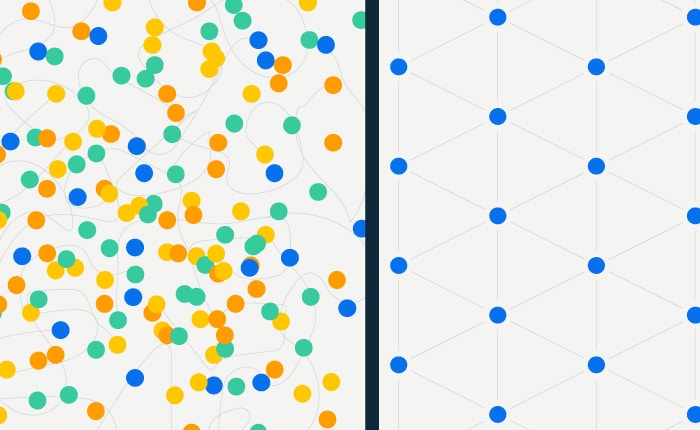Businesses looking to optimize and enhance their data protection programs must adopt data minimization as a central strategy so they don’t have to worry about storage limitation, improve processing activity and archiving purposes, and leaking of personal information all while still following GDPR compliance and other data protection principles. Generally, this involves restricting the data collected, processed, and stored by a business to the information strictly necessary for achieving a specified outcome.
This blog will explore the data minimization principles and how enacting them can help meet your data privacy vs data security obligations.
Data Minimization Explained
The data minimization privacy principle refers to collecting, retaining, and processing only the minimum data necessary to provide goods or services to your customers. Commonly, data minimization is described in the context of the European Union’s (EU) General Data Protection Regulation (GDPR) protections. However, its principles and applications generally extend to any business required to comply with any privacy regulation (e.g., US state laws).
For example, the California Privacy Rights Act (CPRA) prohibits businesses from collecting additional categories of personal data from consumers if retaining or processing the data does not meet the purposes disclosed to them.
As such, businesses subject to these regulatory requirements must implement data minimization policies and practices—restricting the data they work with according to operational or service delivery obligations and the stated purposes at the time of collection.
The Importance of Data Minimization
Individuals—or “data subjects”—will be impacted if their data privacy is compromised (e.g., personal safety, reputation, confidentiality of private activities). And aside from consumer trust and a business’ reputation, more and more laws and regulations have been enacted with steep penalties for violating data privacy.
Implementing data minimization inherently reduces data privacy (and security) complexity and obligations. Fundamentally, the more data you collect, process, and store, the harder it is to protect individuals’ privacy (and enforce robust security and access controls).
Moreover, among the personal data businesses collect, there may be sensitive data categories that require elevated consideration and protections (e.g., data protection impact assessments). If sensitive data is unnecessarily included with standard categories for collection, processing, and storage, the compliance burden and the consequences following a violation immediately become much more rigorous and severe—for no reason.
Data minimization thus serves as a risk mitigation strategy that ensures your business only collects the data required to achieve intended business purposes.
The Data Minimization Principle
According to the GDPR, data minimization involves collecting or processing personal data that is “adequate, relevant, and limited to what is necessary in relation to the purposes for which they are processed.” Although other laws and regulations may utilize different wording, the same general principle applies.
In practice, the data minimization GDPR principle means businesses should refrain from collecting data that does not meet certain business “purpose limitations.” Consumers whose data you collect must always be aware of the specific, explicit, and legitimate purposes for which you collect, process, or retain the data.
Benefits of Data Minimization
Beyond honoring your customers’ privacy rights and keeping their data safe from privacy risks, data minimization provides several benefits to your business.
Data Loss Risk Reduction
One of the best ways to minimize data loss is to keep track of all the data you retain. If your business collects more data than is required to achieve business objectives, it is much harder to implement data tracking across your systems.
Efficient Data Retrieval and Storage
For operational and compliance purposes, your business and its personnel must be able to easily locate and retrieve stored personal data as needed. Data minimization and a robust data mapping system streamline data retrieval and storage, reducing the additional operational bandwidth required to sort through excess data and minimizing the consequences of lacking visibility.
Faster Responses to Requests
It is also much easier to respond to customers’ data requests in accordance with compliance obligations when you know where their data is located across your systems.
Finding the data promptly is essential if they choose to exercise rights common to privacy frameworks, such as the CPRA’s “right to correct inaccurate personal information” or the “right to delete personal information.”
Enhanced Customer Approval
Your customers are also more likely to remain loyal to your business if their data privacy rights are protected. Since data minimization reduces the risks of privacy violations, your business will maintain its reputation and commitment to data privacy year-round.
Preparedness for Regulation and Compliance
Compliance with data privacy regulations is critical if your organization does business with customers residing in a geographic region regulated by privacy frameworks. In the United States, privacy regulations are active in states like California, Virginia, Utah, Colorado, and Connecticut.
As more states adopt data privacy regulations and federal legislation is considered, data minimization will help streamline compliance.
How to Implement a Data Minimization Strategy
So, how can you implement data minimization in compliance with various privacy regulations? Let’s explore some data minimization examples.
Proportional Data Collection
To protect your consumers’ privacy rights, it is crucial to only collect data that is proportional to the purposes for which you are collecting it. In essence, you must justify why you collect, process, or store consumer data and ensure that these purposes align with your business and data privacy objectives.
Needs-Based Retention
Data minimization also involves a strict data retention policy. This policy ensures your business only retains the data needed for specific purposes and only for as long as is needed. Once these purposes are met or the required retention period has passed, the data should be deleted.
De-Identification and Anonymization
De-identified data comprises that which “cannot be reasonably linked to an identified individual and are possessed by a controller who takes reasonable measures to ensure that a person cannot associate the data with an individual.”
By de-identifying data, your business renders it useless in case of unauthorized use or disclosure—inherently protecting the privacy rights of your customers better.
Get Started with Data Minimization
To opt in or opt out of data minimization? Whether your business is subject to the GDPR, CPRA, CPA, or other privacy regulations, data minimization will help you mitigate data privacy risks and better ensure compliance.
And at DataGrail, we believe a strong privacy foundation is essential to any business’ success. With tools like our Live Data Map, you will easily track data across your systems and implement or optimize your existing data minimization strategy.
Check out our privacy platform today!
Other Resources
- Honoring Data Privacy in the Age of Personalization
- 2 Ways You Can Streamline Privacy Impact Assessments (PIA)
Sources:
California Legislative Information. California Privacy Rights Act of 2020. https://leginfo.legislature.ca.gov/faces/codes_displayText.xhtml?division=3.&part=4.&lawCode=CIV&title=1.81.5
EDPS. Necessity & Proportionality. https://edps.europa.eu/data-protection/our-work/subjects/necessity-proportionality_en#:~:text=Proportionality%20is%20a%20general%20principle,used%20and%20the%20intended%20aim.
EU GDPR. GDPR Article 5. https://gdpr-info.eu/art-5-gdpr/
ICO. Data Minimisation. https://ico.org.uk/for-organisations/guide-to-data-protection/ico-codes-of-practice/age-appropriate-design-a-code-of-practice-for-online-services/8-data-minimisation/
Techtarget. Data Retention Policy. https://www.techtarget.com/searchdatabackup/definition/data-retention-policy
Utah State Legislature. Utah Consumer Privacy Act. https://le.utah.gov/~2022/bills/static/SB0227.html

